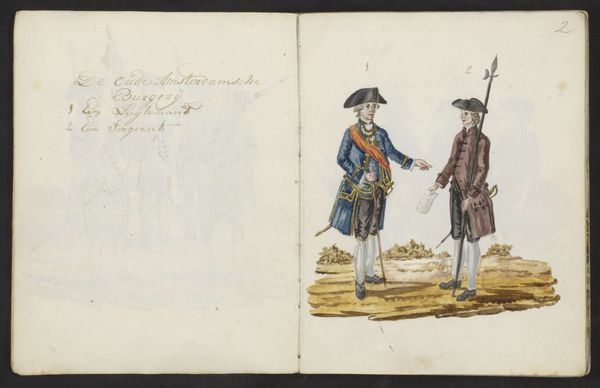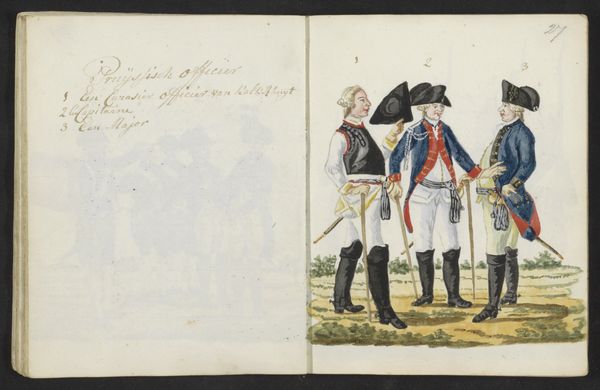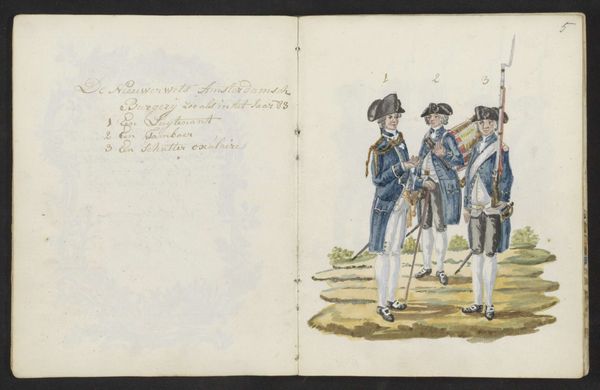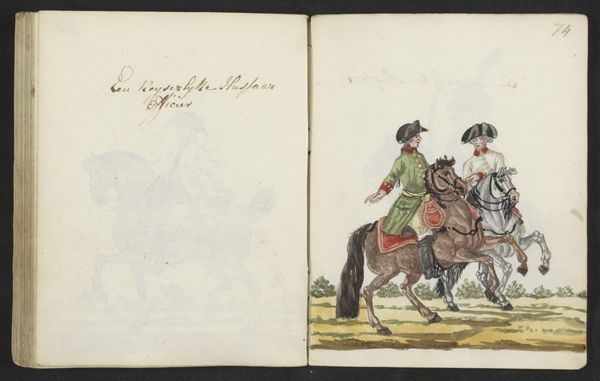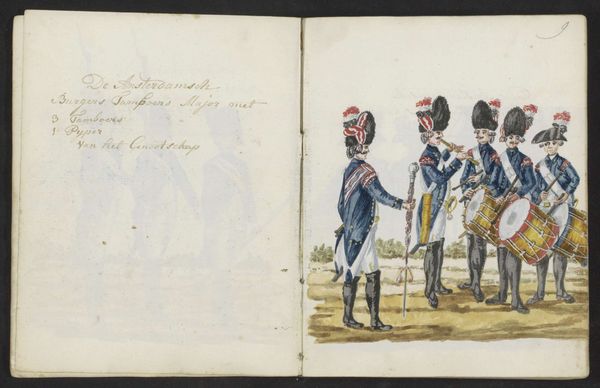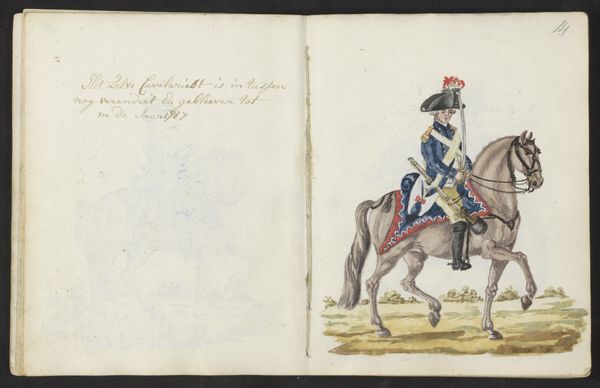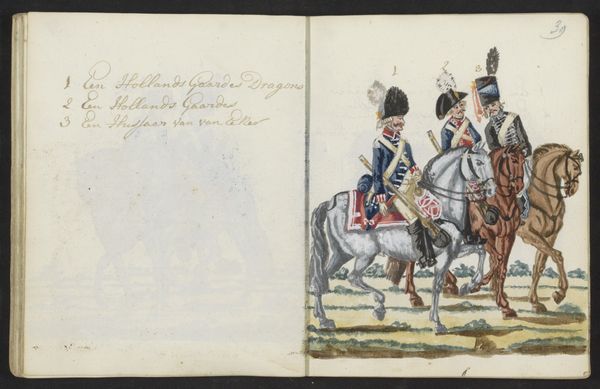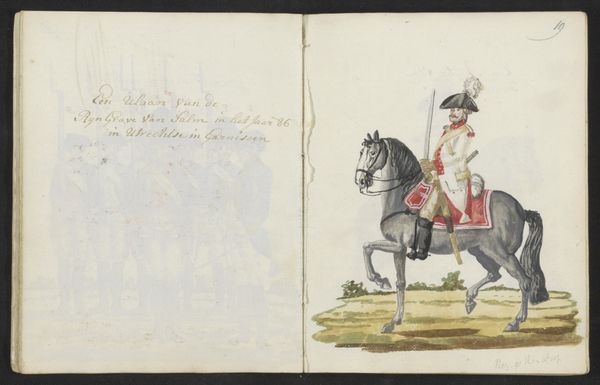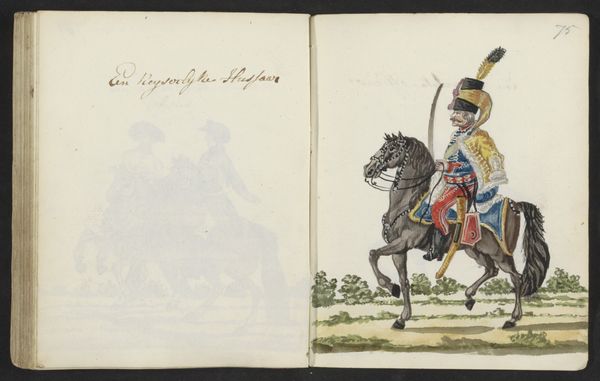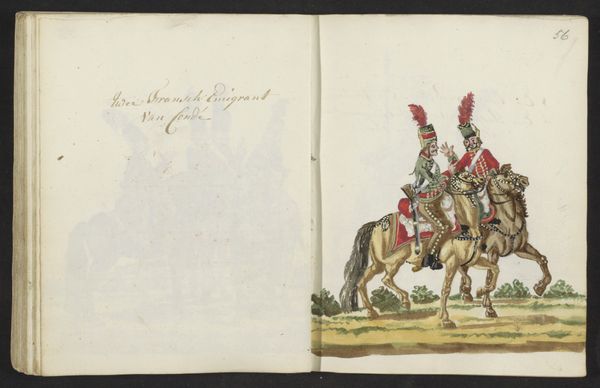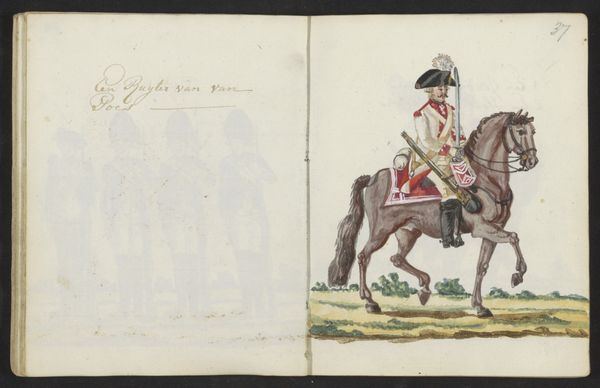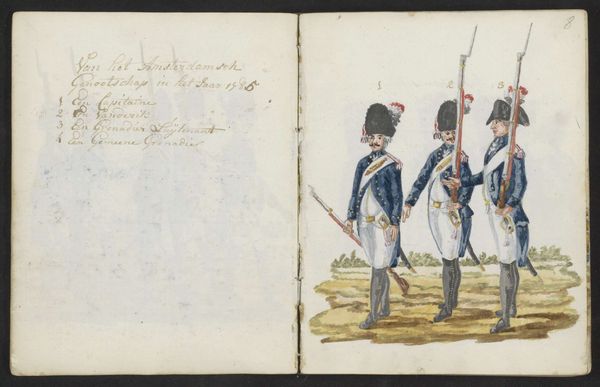
drawing, watercolor
#
portrait
#
drawing
#
dutch-golden-age
#
watercolor
#
coloured pencil
#
genre-painting
Dimensions: height 197 mm, width 310 mm
Copyright: Rijks Museum: Open Domain
Editor: This watercolor drawing from 1795 by S.G. Casten is called "Uniformen van tamboers van de Amsterdamse schutterij van 1770-1783," depicting drummers from the Amsterdam militia. I find the composition so charming but almost ghostly, with the faded figures on the left and the vibrant drummers on the right. What do you see in this piece? Curator: Beyond the visual charm, this artwork serves as a fascinating window into the social fabric and evolving power dynamics of late 18th-century Amsterdam. The militia, or "schutterij," weren't just ceremonial; they represented civic identity and, crucially, access to power. These weren’t professional soldiers, but citizens shouldering the responsibility of maintaining order. Considering that the uniforms predate the drawing by around 20 years, what does it say about the persistence of tradition versus changing political realities at that moment? Editor: That's a really interesting point about the militia's role. So, seeing them depicted here is like looking at a symbol of civic power. Curator: Precisely! Think about the Dutch Golden Age and its emphasis on civic virtue. Then juxtapose it against the backdrop of the late 18th century, a time of rising social tensions, Enlightenment ideals, and nascent revolutionary sentiments. This drawing becomes a record of a very specific socio-political moment. How does knowing that potentially alter your interpretation of their formal dress and bearing? Editor: It makes me wonder about who was included in this civic identity and who was excluded. The artist makes them appear proud. Maybe the drawing preserves the appearance of a strong identity at a time when the world around them was rapidly changing. Curator: Exactly. And by documenting them, is the artist also subtly commenting on their place in this changing world? These are crucial questions the artwork opens for us. Editor: I never thought about it that way! Thanks; now I understand there is more than just face value when considering context and perspective. Curator: That is how artwork is viewed; as part of ongoing conversation.
Comments
No comments
Be the first to comment and join the conversation on the ultimate creative platform.
